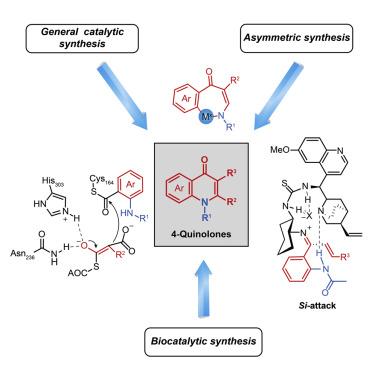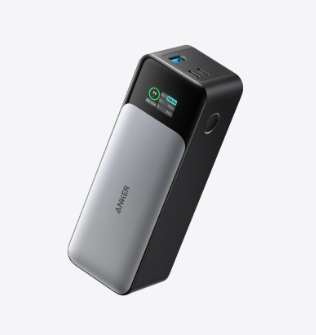Fluoroquinol ketone antibacterial
Introduction
[Properties] This product is white to light yellow particles and powder. [Specifications] 0.1g

Usage Dosage
Oral.1. Escherichia coli, pneumoniae Clebs and Single deformation bacteria have an acute simple lower urinary tract infected with 0.4 g (4 capsules), 2 times a day, 3 days.2. Simple urinary tract infections caused by other pathogens, the same is true, and the course of treatment is from 7 to 10. 3. Complex urinary tract infection, the dose is the same, the course of treatment is 10 to 21. 4. Simple gonococcal urethritis, single 0.8 ~ 1.2 g (8 capsules ~ 12 capsules). 5. Acute and chronic prostatitis, 0.4 g (4 capsules) once, 2 times a day, the course of the course. 6. Intestinal infection, 0.3 ~ 0.4g (3 capsules ~ 4 capsules), 2 times a day, 5 to 7 days. 7. Tasteas infection, 0.8 ~ 1.2g (8 capsules ~ 12 capsules) one day, take 2 to 3 times, treatment of 14 to 21 days.
Adverse reactions
1. The gastrointestinal response is common, which can be manifested as abdominal discomfort or pain, diarrhea, nausea or vomiting.2. The central nervous system reacts, there can be dizziness, headache, lethargy or insomnia. 3. Allergic reactions, rash, itching of skin, occasional exudative polygeneous erythema and vascular neurochastic edema. A small number of patients have a photosensitive reaction. 4. Even: (1) Epilepsy, mental abnormal, irritability, consciousness, illusion, tremor. (2) Summary, fever, rash, integrated nephritis. (3) Intraiobitis. (4) Crystal urine, more common in high dose applications. (5) Joint pain. 5. A small number of patients can increase the serum amino transferase, the increase in blood urea, and the peripheral white blood cells are lowered, and mostly mild, and it is transient. [Taboo] patients with allergies of this product and fluoroquinolone are disabled.
Precautions
1. This product should be taken in an empty stomach and drink 250ml at the same time.2. Since the current Escherichia coli to the drug-resistant drugs in norfloxacin, the urine specimen should be retake before administration, and the amount of bacterial drug sensitivity results should be adjusted. 3. This product can occur at a large dose of the product or the urine pH can occur in 7 or more. In order to avoid the occurrence of cycling, it is appropriate to drink water, maintain 24 hours of urination in 1200 ml. 4. The renal dysfunction will be adjusted according to the renal function. 5. The use of fluoroquinolone drugs can occur in severe photosensitive reactions. Applying this product should avoid excessive exposure to sunshine, such as a photoclast response to stop. 6. Glucose-6-phosphate dehydrogenase deficiency patients take this product, and a hemolysis reaction can occur. 7. Quinolones include this product to be aggravated, and the respiratory muscles are unable to endanger life. The use of quinolones in patients with severe muscles, including this product, should be particularly cautious.8. When the liver function is reduced, if the height (cirrhosis ascites) can reduce drug removal, the blood concentration is increased, the liver, and renal function is particularly obvious, and the application of the adequate and disadvantage is needed, and the dose is adjusted.9. Patients with Chinese nervous system diseases, such as epilepsy and epilepsy, should avoid applications, and should carefully wear exhibit and cons. [Pregnant women and lactating women medication] have been multiplied by monkeys, 10 times the dose of high dose, and found this product can be aborted. This dose is 2 times the plasma concentration (CMAX) of the monkey. This product did not confirm a teratogenic effect in animals. However, in pregnant women do not conduct appropriate, there is a well-controlled study, so this product is not suitable for pregnant women. Whether this product is still lacking in information. This medicine cannot be detected when the milk woman is applied 200 mg this product. However, due to the small research dose, and other varieties of this drug are secreted by milk, the volatility of newborns and infants and children should avoid application of this product or stop breastfeeding. [Children's medication] This product has not been established in infants and children under the age of 18. However, this product can cause joint lesions when used in numerous agents. This product is not suitable for children under the age of 18 and teenagers. [Elderly Medicine] Elderly patients often have renal dysfunction, because the product is discharged by renal excretion, and it needs to be applied.
Drug interaction
1. Urine alkaline can reduce the solubility of this product in urine, resulting in crystalline urine and nephrotoxicity.2. This product may be in combination with the tea alkaline, due to the competitive inhibition of cytochrome P450, the liver of the tea is significantly reduced, and the blood elimination half-life (T1 / 2) is extended, and the blood concentration is increased, and the tea is present. Symptoms, such as nausea, vomiting, tremor, uneasiness, excitement, convulsions, palpitations, etc., should be determined when combined with use should measure the concentration and adjustment dose of tea alkali. 3. The cyclosporine is combined with this product, which enhances the blood concentration of the former, and the cyclosporine blood concentration must be monitored, and the dose is adjusted. 4. This product can enhance the anticoagulant time of the latter when using the anticoagulant China Falill, and should closely monitor the patient's prothrombin time. 5. Phane Shuco reduces this product from the kidney tube secretion of about 50%, which can be toxic due to the increase in blood concentration in this product. 6. This product is antagonistic with furant, not recommended. 7. A variety of vitamins, or other iron-containing, zinc ionic preparations and aluminum-containing or magnesium-containing acid drugs can reduce the absorption of this product. It is recommended to avoid coquette. It cannot be avoided for 2 hours before this product, or take 6 hours after taking drugs. .8. Dehydroanosine (DDI) can reduce the oral absorption of this product, which can be chelated with fluoroquinolone in its formulation, which can be cheened with fluoroquinolone, so it is not advisable.9. This product interferes with caffeine metabolism, causing caffeine clearance, blood eliminating half-life (T1 / 2) extension, and may result in a central nervous system toxicity. [Excessive drug] mice and rat single-agent oral product dose of 4 g / kg, did not find a fatal effect. Excessive vomiting or washing the stomach is required to cause gastric emptying, carefully observe changes, and support therapy. Appropriate amount of liquidation must be maintained. [Pharmacological Toxicology] This product is fluoroquinoloid antibacterial drug, with broad-spectrum antibacterial effect, especially for the high antibacterial activity of oxygenullan negative bacilli, good antibacterial effect on the following bacteria: Most bacteria Increasing colon bacteria, galvani, galmoni, Escherichia coli, Cleasi, Salmonia, Chimberg, Salmonia Erntoa, etc. Normoflufloxacin also antibacterial activity on multiple drug resistant bacteria. It is also a good antibacterial effect on Penicillin resistance of gonorrhizhamida, flu pattythiothetrium and cabinea. Norfloxacin is a bactericidal, by inhibiting DNA synthesis and replication by acting on a A sub-unit of bacterial DNA spiral enzyme, causing bacteria death.
Pharmacokinetics
The oral absorption is rapid but not complete, about 30% to 40% of the amount of administration; extensive distribution in various tissues, body fluids, such as liver , Kidney, lung, prostate, testicular, uterus, bile, sputum, blisters, blood, urine, etc., but are not seen in the central nervous system. The serum protein binding rate was 10% to 15%, and the blood elimination half-life was 3 to 4 hours, and the renal dysfunction was extended to 6 to 9 hours. Single oral oral articles 0.4g and 0.8 g, the blood concentration of 1 to 2 hours, the peak concentration (CMAX) is 1.4 to 1.6 mg / L and 2.5 mg / L, respectively. The kidney (glomerular filtrate and renal tube secretion) and the hepatobiliary system are the main excretion pathway, 26% ~ 32% in the form of intra-urinate in the form of metabolites, from bile and / or fecal discharge 28 % ~ 30%. The urine pH affects the solubility of this product. Dissolve in the urine pH 7.5, the dissolution increased during other pH.
Latest: West Lake Culture Square Station
Next: Functional relationship








